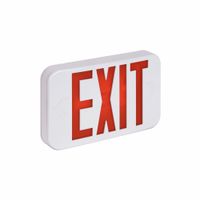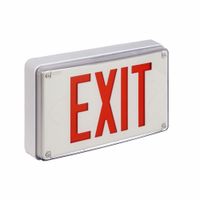- Home
- Lighting
- Emergency Exit Lighting
- Lighted Exit Signs
Lighted Exit Signs
Lighted exit signs hardwire into an electrical system that keeps them lit for visibility. They mount near exit route doors and doorways, marking exits and passages toward exits to guide people out of buildings. Signs with battery backup switch to their battery during a power outage. Signs without ba .....Read More
Frequently Asked Questions
What are the installation requirements for hardwired lighted exit signs?
How do I choose between battery backup and non-battery backup exit signs?
What are the local safety code requirements for exit sign materials and lettering?
How do I maintain and test the battery backup in exit signs?
What are the differences between edge-lit and box-style exit signs?
How do I ensure exit signs are vandal-resistant in high-abuse areas?
What are the best practices for installing exit signs in wet locations?



